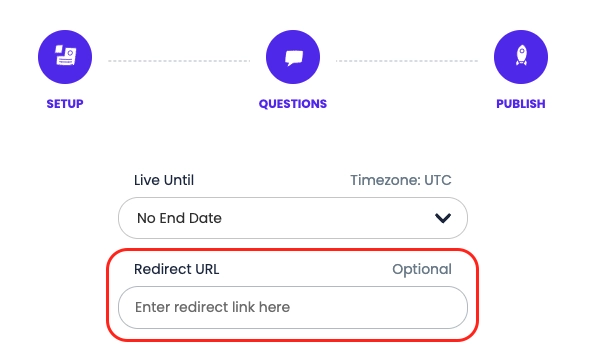Most companies try to reduce hiring bias with quick fixes—bias training, reminders to 'be fair,' or blind resume screening.
The problem? These generic tactics rarely work because they don’t address the specific biases inside your organization.
Gender bias in engineering looks different from age bias in sales. Executive hiring comes with different blind spots than entry-level recruitment. Treating them all the same is like treating a fever without diagnosing the infection—you might ease symptoms, but the cause remains.
That’s why we built a framework that starts with diagnosis, not guesswork. You’ll learn how to:
- Pinpoint the exact biases affecting your hiring.
- See how they show up in your process.
- Apply targeted solutions that actually work.
Let’s start by naming the problem.
Step 1: Identify the specific hiring bias within your organization
Your bias elimination efforts can miss the mark when they don't target the exact root cause. Sometimes, even the process of eliminating hiring bias can introduce conscious and unconscious biases.
Consider Wells Fargo's approach. They required at least half of the interviewed candidates for high-paying jobs to be from underrepresented groups. This led to legal challenges because managers focused on quotas instead of improving hiring outcomes.
When interventions target the symptoms (e.g., names on résumés) rather than the causes (who gets sourced), even the most well-intentioned approach fails. That’s why you need multiple strategies, self-awareness, and structured evaluation to detect hiring bias effectively.
Here is what you can do:
- Conduct a recruitment bias audit that analyzes your hiring data across multiple dimensions. Look for patterns across demography, roles, decision makers, and trends.
- Use multiple data sources. Candidate surveys are great, but analyzing additional factors like how employees refer candidates can reveal network-based bias. External benchmarks, exit interviews, and data from candidate recruitment software are also reliable sources.
- Watch out for uncommon hiring bias, too. Everyone knows about affinity bias and first impressions. But bias can also happen within demographic groups, making it harder to spot and address..

Step 2: Understand how the specific bias manifests
Once you've identified your primary bias challenges, you need to understand the WHO, WHAT, WHEN, and HOW of their manifestation. Here’s why:
Hiring bias emerges at distinct stages (WHEN)
Timing can determine where intervention matters most. Many organizations assume bias is worst at interviews, but often the most damage happens earlier (candidate sourcing, referrals) or later (offer negotiation, promotions).
The Australian public service learned this the hard way. They applied resume anonymization to reduce bias, but the real problem was pipeline barriers for women. The effort had unintended results.
"We anticipated this would have a positive impact on diversity — making it more likely that female candidates and those from ethnic minorities are selected for the shortlist,".
"We found the opposite, that de-identifying candidates reduced the likelihood of women being selected for the shortlist,” said Professor Michael Hiscox, who oversaw the trial.
To get the timing and context right, you want answers to the following key questions:
- When in the process does bias occur?: Is it during resume screening, phone interviews, in-person meetings, or final decisions? Each stage requires different interventions. A full-cycle recruiting process analysis can provide clarity here.
- When are biased decisions most likely? Under time pressure? During unstructured conversations? Over lunch, your colleague might say, “It’d be great to hire more women, but I worry about lowering our bar”, signifying deep-seated gender bias in the system.
- When do bias patterns change? Understanding seasonal variations, market condition impacts, or policy change effects helps predict and prevent bias resurgence.
Different people shape bias differently (WHO)
Different stakeholders introduce bias in unique ways: recruiters in sourcing, managers in offers, peers in referrals. If you don't map who's involved, you risk applying the wrong solution.
The NFL's Rooney Rule offers a valuable lesson. The mandate says teams must interview minority candidates for leadership positions, assuming bias rests with coaches making interview calls. In reality, team owners and executives control most hiring decisions, so mandating interviews didn't reach the real decision-makers.
Provided you already know when bias manifests in the hiring process, the following questions might help you nail down the different actors shaping bias.
- Who exhibits the bias?: Is it concentrated among certain interviewers, departments, or seniority levels?
- Who is affected? Which groups face the most significant impact? Are there compounding effects for people with multiple marginalized identities?
- Who has influence?: Sometimes the interviewer isn't the final decision-maker..
Hiring bias appears in specific behaviors and signals (WHAT)
Bias may appear in résumé keywords, interview questions, or subjective assessments of “fit”. Bias might show up in resume keywords, interview questions, or subjective "fit" assessments. An AI resume screener might downgrade applications with "women's chess club" without anyone realizing the gendered impact.
You want to look across the board to identify what the bias looks like so you can measure it or track progress. Asking the following questions might be a productive start:
- What specific actions demonstrate bias? Consistently rating certain groups lower on "culture fit," asking inappropriate questions, and making different assumptions about motivations?
- What criteria are being applied inconsistently? Look for situations where the same qualifications are valued differently depending on who presents them.
- What language patterns emerge? Phrases like "not quite right for our culture" or "lacks executive presence" often hide discriminatory preferences.
Recruitment bias operates through different mechanisms (HOW)
Understanding how bias works—through algorithms, networks, stereotypes, or incentives—helps you design solutions that tackle root causes.
- How does the bias manifest behaviorally?: Longer deliberation times for certain candidates? Different body language during interviews?
- How are decisions justified?: Pay attention to how biased decisions are rationalized—this reveals the thinking driving discrimination.
- How do environmental factors contribute?: Interview settings, panel composition, and process structure either amplify or reduce bias.
Bottom line: You can't solve hiring bias until you've accurately located how it manifests in your workflow and culture. Map the WHO, WHAT, WHEN, and HOW to avoid building interventions that are ineffective or even harmful.
Document the effects too. Understanding impact helps build the business case for change in four key areas:
- Talent pipeline: How is bias limiting access to top talent?
- Performance implications: Are biased decisions leading to lower performance?
- Cultural consequences: How is bias affecting workplace culture and retention?
- Legal and reputation risks: What are the potential legal and brand implications?
Step 3: Develop a plan to eliminate the specific bias
With a clear understanding of your challenges, you can design targeted interventions. Your plan should address the specific issues you've identified while building systems to prevent bias from recurring. While there's no universal approach, here’s how Willo can help you and 7 evidence-based strategies that can support your customized plan:
7 Evidence-based tactics for reducing bias in the hiring process
- Gain candidate trust by sharing how you’re tackling hiring bias
- Combine blind assessments with structured scoring
- Use diverse evaluation panels
- Evaluate candidates in batches to avoid prototypical bias
- Hire for culture-add, not culture-fit
- Support AI screening with a human in the loop
- Incorporate DEI and MEI principles in your hiring process
1. Gain candidate trust by sharing how you’re tackling hiring bias
Being transparent about your bias-reduction efforts can reassure candidates that they will be judged fairly, which encourages them to present their authentic selves.
Many applicants enter the hiring process already assuming it’s biased—whether because of personal experience or stories from others. As a result, they may hide parts of their identity or adjust applications to work around perceived bias.
Research reveals the scale of this problem: when researchers sent resumes to 1,600 job postings, Black applicants received 25% more callbacks with "whitened" resumes versus only 10% when racial identity was apparent. Asian applicants saw similar patterns: 21% versus 11.5%.
To promote transparency, here are some digital recruitment best practices that might help:
- Share a brief video explaining your hiring process, showing tools like skills assessments, structured interviews, and fair screening
- Publish diversity metrics and highlight inclusion initiatives
- Include a statement on your careers page emphasizing commitment to unbiased selection
Transparency about your bias reduction efforts builds candidate trust and attracts diverse talent while holding your organization accountable to its commitments.
2. Combine blind assessments with structured scoring
Blind skills assessments and structured scoring work together to ensure candidates are chosen for abilities, not biases. The blind test removes identifying details so reviewers focus only on work quality, while structured scoring applies consistent criteria.
Using either alone leaves gaps. Research shows that when hiring managers knew candidates' backgrounds, they overlooked mistakes from white men but penalized women and Black candidates for identical errors.
That means if you’re hiring for a Customer Service Representative role, you can ensure the scoring process is bias-free through the following steps:
- Create tests that simulate real job challenges. You could ask candidates to draft a response to an angry customer email.
- Remove all personal identifiers from submissions before reviewers see them.
- Develop clear scoring criteria tied directly to job requirements
- Have reviewers score individually to prevent groupthink
Skills assessments only work when they're properly designed and scored. Discover how to create tests that candidates trust and results you can rely on.
3. Use diverse evaluation panels
Having a diverse candidate evaluation panel reduces the risk of unconscious bias influencing the outcome. Research shows that bringing together people of multiple viewpoints and life experiences can counteract individual biases and create a more balanced assessment.
For example, Psychologist Samuel Sommers conducted a mock jury experiment with 200 adults to explore how diversity impacts decision-making. In the study, some juries included two Black jurors alongside four White jurors, while other juries were all White.
Even before deliberation, members of diverse juries were nearly 10% less likely to presume the defendant’s guilt. During deliberations, diverse juries discussed more facts, made fewer errors, and spent more time analyzing the evidence.
So, when creating evaluation panels, include members from underrepresented groups and balance the panel with varying levels of seniority and life experiences. You could also consider virtual recruitment options to remove geographical constraints and allow asynchronous reviews.
4. Evaluate candidates in batches to avoid prototypical bias
Research shows recruiters who evaluated candidates individually relied more on stereotypes, but those who compared candidates in batches focused on actual performance and qualifications. That’s because you are likely to unconsciously compare them against an imagined “perfect” candidate or stereotypes about their demographic when you evaluate candidates sequentially.
A strategic way to apply this tactic could include grouping applications together and then assessing them in batches. As applications come in, wait until you have about five to ten, and assess them side-by-side using the same criteria. This approach ensures you evaluate actual strengths and weaknesses against each other, leading to a more reliable hiring decision.
5. Hire for culture-add, not culture-fit
"Culture fit" often becomes code for hiring people who look, think, and act like existing employees. Instead, reframe evaluation from "how will this person fit in?" to "what unique perspective can this person bring that we don't already have?".
Implementation approach:
- Identify your team's prevailing working styles and strengths
- Evaluate candidates on both alignment with core values and ability to expand team capabilities
- Look for candidates who bring complementary skills without disrupting values
6. Support AI screening with a human in the loop
AI algorithms can be unreliable for hiring decisions. They often promote historically biased hiring preferences that introduce bias in the process. From Google’s flawed job-posting algorithm to resume-screening lawsuits, the risks of AI algorithmic decision-making in hiring are well-documented.
To avoid these issues, support AI screening tools with a human in the loop. This personnel should:
- Audit AI recommendations: Regularly analyze patterns in AI suggestions to spot potential biases by gender, race, or other protected attributes. You can do this during audits after each hiring round.
- Combine AI with structured evaluations: Use AI to handle repetitive tasks, but rely on blind skills assessments, structured scoring rubrics, and panel reviews for final evaluation.
- Adopt human-focused candidate screening tools: Use screening tools specifically designed to automate the repetitive aspects of your workflow and leave the final decision to humans.
7. Incorporate DEI and MEI principles in your hiring process
Most people think that organizations must choose between hiring for diversity or hiring for merit. The opposite is true. An effective bias reduction strategy requires both approaches working together. Use inclusive practices to build a broad, qualified candidate pool, then apply merit-based evaluation using structured, bias-resistant systems.
Your organization's bias challenges are unique. Your solutions should be too.
Implementing a checklist of popular solutions for fighting hiring bias is tempting. But lasting change comes from systematically diagnosing your specific challenges and building targeted responses.
The three-step framework provides a roadmap for sustainable improvement:
- Identify your specific biases through comprehensive analysis and feedback
- Understand how those biases manifest in your organizational context
- Develop targeted solutions that address your particular challenges while building long-term resilience
The evidence-based tactics we've shared can support your approach, but they must be adapted to address your specific patterns. Most importantly, having good intentions is not enough to fight hiring bias. You have to remember that even intentioned approaches can fail without self-awareness.
Want to see how Willo can support your bias reduction efforts? Discover how our human-first screening platform creates structured, fair, and engaging hiring experiences that work for everyone.






